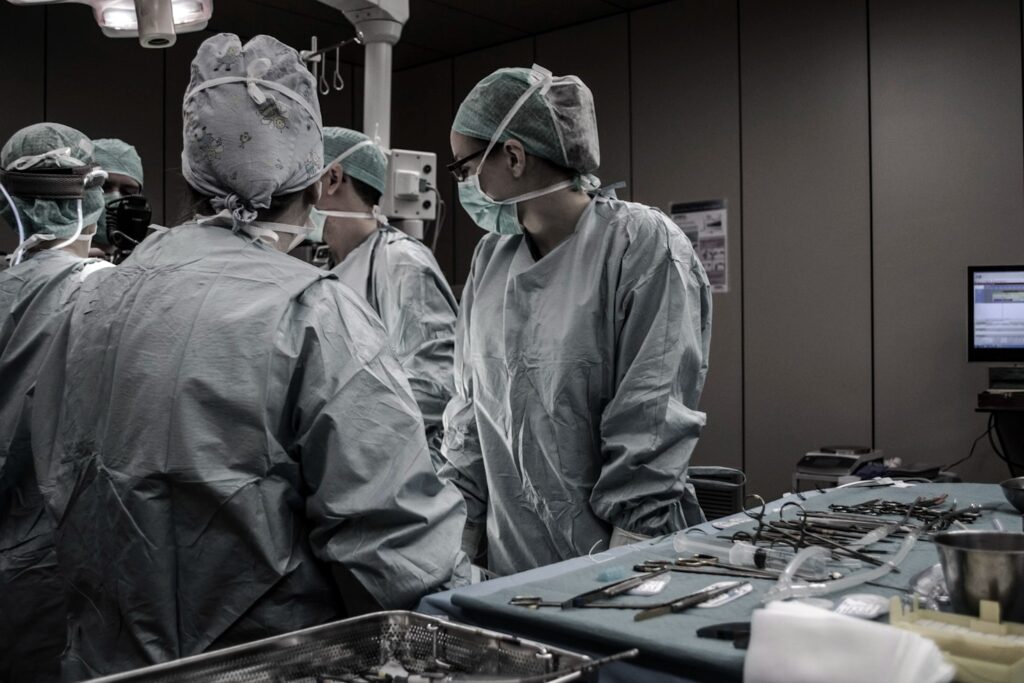Your cart is currently empty!
Debunking Myths About Light Therapy: Understanding the Science of Red and Infrared PBM with Lasers and LEDs
Having spent a lot of time researching light therapy, I believe it’s important to clear up some confusion.
There are over 7,000 scientific prove on photobiomodulation (PBM), most of them using red and infrared light.
Both lasers and LEDs are used in light therapy devices. The idea that LEDs don’t emit enough energy to make a difference was disproven years ago— and since then there has been a huge growth in consumer light therapy products.
The performance of LEDs in comparison to lasers can be explained by the fact that when photons reach the body, there is no biological distinction between photons emitted from an LED or a laser.
Once laser light makes contact with skin— which, it turns out, is far more reflective than previously believed— the latter’s columnar property simply does not come into play.
Cold laser therapy (also referred to as low level laser therapy, or photobiomodulation) utilizes low-powered lasers or LEDs to stimulate cellular function.

Cold Laser Therapy: Effective Treatment for Arthritis, Pain, Inflammation, Hair Growth & Skin Health with Red and Near-Infrared Wavelengths
Today’s cold laser devices are often used to treat arthritis, pain and inflammation; they also find applications in promoting hair growth and enhancing skin health.
Because red wavelengths can penetrate tissues more deeply than other colors of light, most red light therapy units— including those for home use— combine red with near-infrared (NIR) wavelengths.
Infrared light penetrates deeper into the body than red light and is used to treat pain, arthritis, inflammation, slow-healing fractures, and brain conditions.
Blue light therapy is effective in reducing acne. Because it is close to the UV spectrum, blue light can kill the bacteria that cause acne (P. acnes) without harming the skin or causing side effects. People undergoing blue light treatment should wear goggles to protect their eyes. Exposure to blue light at night can also suppress the production of melatonin, a hormone that regulates sleep.

Revolutionary Brain Research: How 810 nm & 1070 nm Wavelengths Are Transforming Red Light Therapy
The wavelengths 810 nm and 1070 nm are regarded as the most “potent” because they penetrate deeply into bodily tissues.
Brain research that uses these 2 wavelengths is getting some amazing results. And now, therapies that use red light at either 810 nm or 1070 nm are becoming more sophisticated — with some remarkable outcomes for patients.
The Power of Infrared Wavelengths for Deep Brain Tissue Penetration
For instance: When the treatment is pulsed at 10 Hz or 40 Hz, people who suffer from conditions such as dementia, traumatic brain injury or Parkinson’s disease have shown significant improvements in their symptoms.
When it comes to penetration of brain tissue, infrared wavelengths are unmatched.
By using a specific frequency pulse, the brain waves can be entrained to either 10 Hz or 40 Hz– the alpha and gamma states respectively. Red light therapy is commonly used in anti-aging devices such as light domes and face masks; these products typically emit both red and infrared wavelengths (although some also include blue and yellow).
For treating acne symptoms, a combination of blue and red lights is most effective.
Bacteria is killed by blue light & redness is reduced by red light.
Both of these can help reduce the size of pimples and lesions.
Scars can be healed with the help of red and infrared light. Yellow light works to reduce redness as well. When it comes to reducing wrinkles there’s no better combination than red & infrared lights; they boost collagen and elastin production which helps smooth out your skin– but here’s where things get tricky: dosing.
The Importance of Correct Wavelength and Fluence for Effective Red Light Therapy: Why Consumers Must Choose Reputable Products
For the treatment to be successful, it is important that the wavelength and fluence fall within the therapeutic window.
Because marketing professionals and non-medical personnel write product descriptions, the market is overwhelming for buyers trying to make an educated decision.
Vendors compete fiercely on Amazon to boost their products’ numbers— so much so that you will find claims of 100mW/cm^2 or even 200mW/cm^2 irradiance at the skin surface from practically every red light there! But how can a consumer possibly verify these figures?
It is very difficult for the industry to provide the correct wavelength and dosage.
If they get it wrong, nothing good will come out of it. When mitochondria absorb photons of light at a specific wavelength, it triggers the production of ATP – the energy currency of cells.
Yep. We’re like plants.
There are great changes in the amount of light received which depends a lot on distance as well as time! If a customer makes use of incorrect distance or applies his/her treatment for wrong duration (per session), he/she will not get any benefit out of it.
Healing initiates upon reaching a critical mass of absorbed wavelengths. The process continues with an influx of photons until the bag becomes full, at which point healing ceases.
If the light remained on one spot too long, the healing process would reverse itself, like un-doing the therapy. This is why it’s so important for consumers to get products from reputable sources that have been properly tested with good equipment.
I hope I’ve cleared up some of the confusion around red light therapy today. As you can probably tell, I’m quite passionate about this subject – so if you have any questions, please don’t hesitate to ask me! Thanks for reading and PEACE!

Leave a Reply